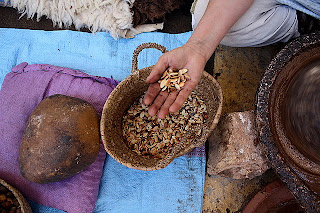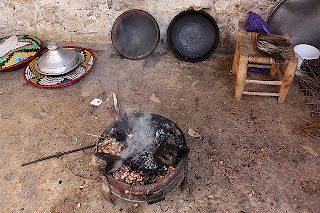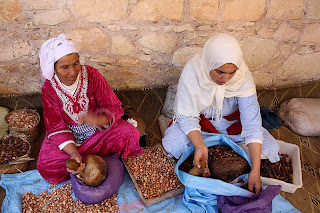

The Principal Market of carpet in Marrakech :
Markets or souks in Marrakech are the principal shopping attraction in the city. They are "a honeycomb of intricately connected alleyways, this fundamental section of the old city is a micro-medina in itself, comprising a dizzying number of stalls and shops that range from itsy kiosks no bigger than an elf's wardrobe to scruffy store-fronts that morph into glittering Aladdin's Caves once you're inside." Historically the souks of Marrakesh were divided into areas of retail, including leather, carpets, metalwork, pottery, etc. The areas are still roughly ordered but there is significant overlap today. Many of the souks sell items such as carpets and rugs, traditional Muslim attire, leather bags, and lanterns etc. Haggling is still a very important part of trade in the souks.
One of the largest souks is Souk Semmarine selling anything from brightly coloured bejewelled sandals and slippers and leather pouffes to jewellery and kaftans. Souk Ableuh contains stalls which specialize in the retail of olives, a variety of types and colours including green, red, and black olives, lemons, chilis, capers, and pickles and mint, a common ingredient of Moroccan cuisine and tea. Similarly, Souk Kchacha specializes in dried fruit and nuts, including dates and figs, walnuts, cashews and apricots. Rahba Qedima contains stalls selling hand-woven baskets, natural perfumes, knitted hats, scarves and t shirts, Ramadan tea, ginseng, and alligator and iguana skins. Criee Berbiere, to the northeast of this market, is noted for its dark Berber carpets and rugs. Souk Siyyaghin is noted for its jewellery, and Souk Smata nearby is noted for its extensive collection of babouches and belts. Souk Cherratine specializes in leatherware, and Souk Belaarif sells modern consumer goods. Souk Haddadine specializes in ironware and lanterns.
Ensemble Artisanal is a government-run complex of small arts and crafts which has a reasonable range of goods dealing with leather, textiles and carpets. In the workshop at the back of this shop young people are taught a range of crafts.


























